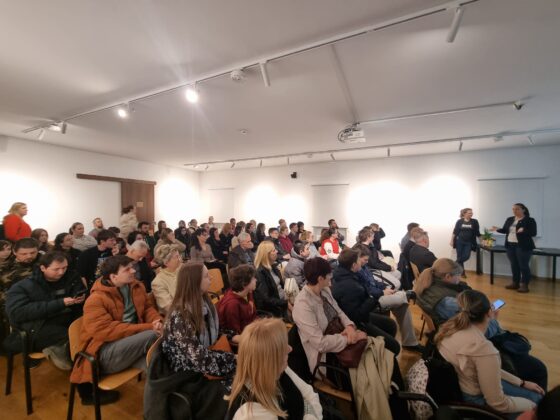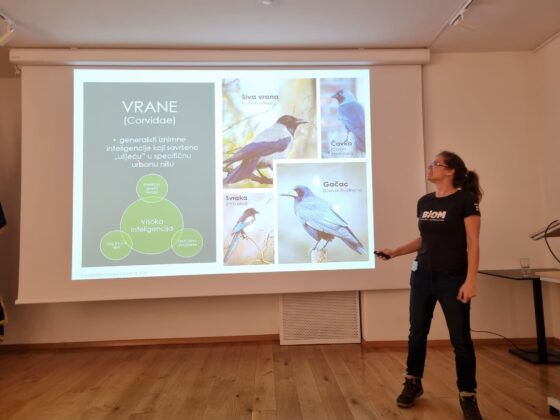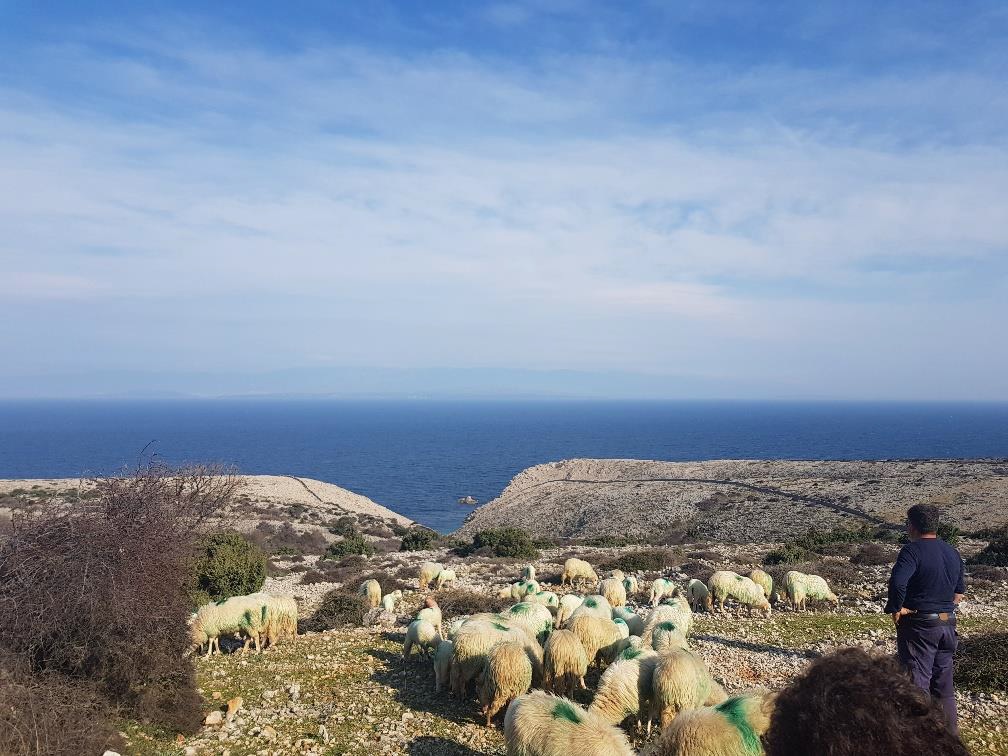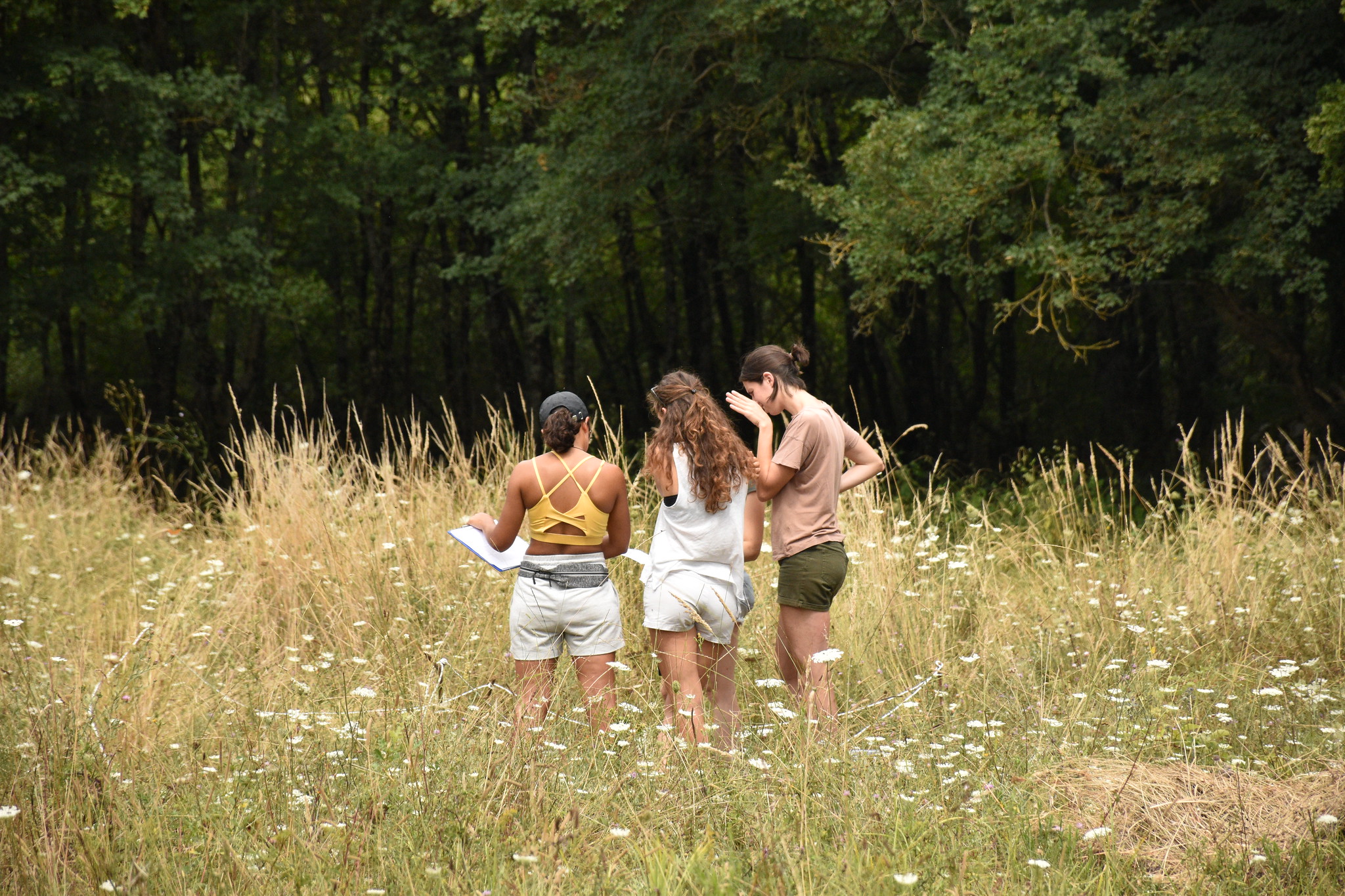
Invited by the Public Institution for Nature Protection Međimurje Nature, the ornithologist Iva Šoštarić from Biom held a lecture yesterday in Čakovec titled “The Rook – Bird of the Year 2024 and Our Feathery Neighbour”.
Mihaela Mesarić, PhD, head of the specialist service of Međimurje Nature, introduced the speaker, as well as the Association Biom to the audience, presenting the association’s activities pertaining to crows.
People of all ages gathered at the Čakovec Museum of Međimurje and their interest in the lecture was evident. The rooks and their colonies have been becoming more and more visible in urban areas, despite previously only having nested on the edges of agricultural areas. However, as they’ve been losing their habitats due to the destruction of colonies and intense exploitation of agricultural land that often leaves nature with the short end of the stick, the rooks have been moving into the city en masse in the last three decades.

The lecture and the discussion that followed provided an opportunity to talk about how the city of Čakovec has been treating the rooks in the last 25 years, about the state of that species in Croatia, and about poor practice related to the cohabitation of humans and rooks. The lecture was even held near the largest colony of rooks in Čakovec, the Zrinski Park, where 400-500 couples of rooks have already began building their nests.
“This is the period when it’s the most difficult to be the rooks’ neighbour – they’re hard at work building nests, which means that they’re loud, and they drop twigs, as well as droppings, since the trees that usually provide a protective cover still haven’t leafed. But soon enough this problem will become drastically smaller, which is why we ask citizens to be patient, and public services to clean the area beneath the colony more often,” Iva Šoštarić said.
“As the colony in Zrinski Park is not located in a particularly challenging location, which would be near residential buildings, kindergarten courtyards, or above parking lots, it would be wise to continue protecting it. Otherwise, the rooks might decide to move to a location which would be far less acceptable to their human neighbours. After all, the Zrinski Park is a true urban oasis of biodiversity and the presence of the rooks only makes it richer,” Iva concluded at the end of her lecture.
Translated by: Lucia Grzunov






